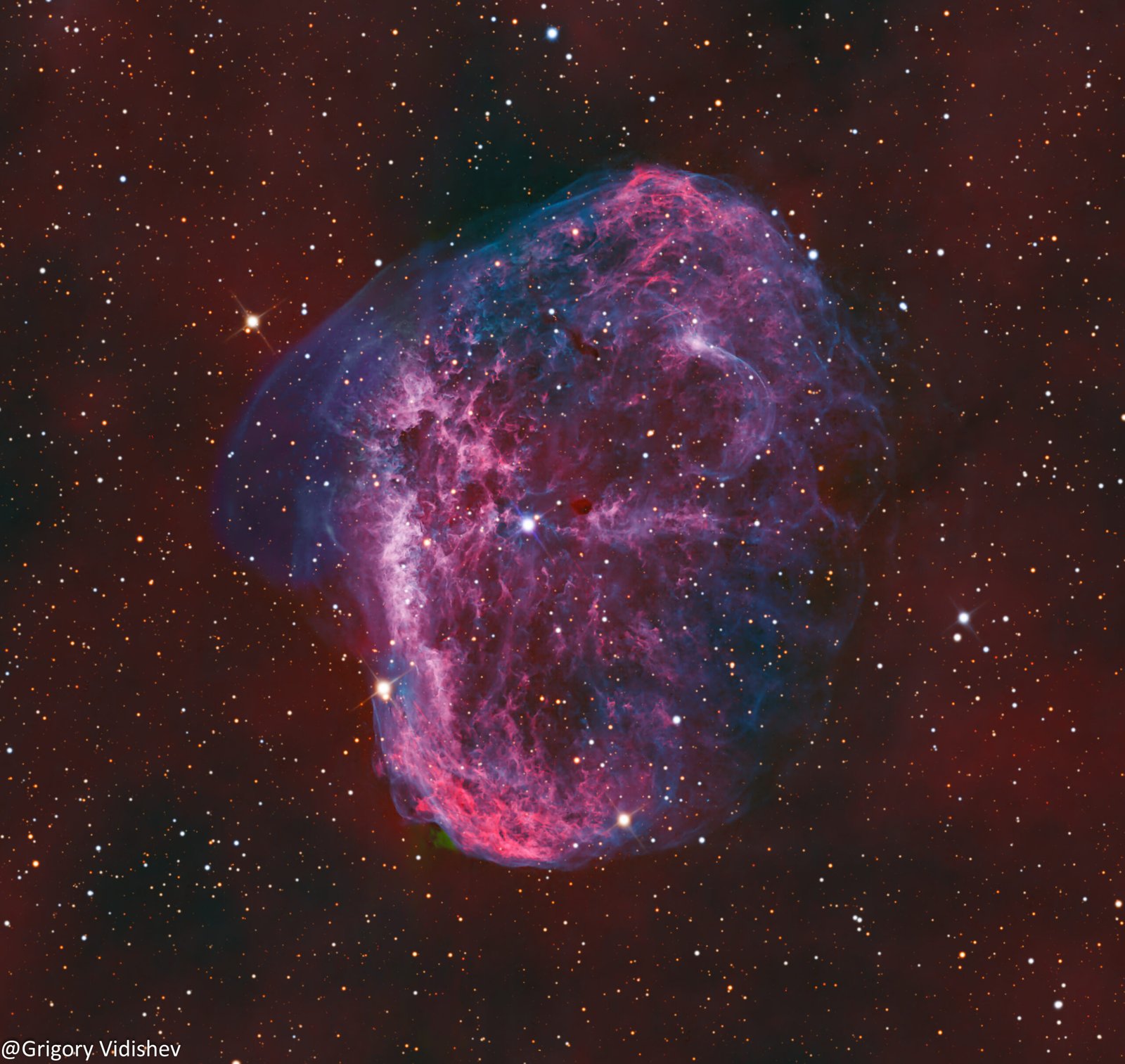

NGC 6888 Crescent Nebula
| Description |
The Crescent Nebula (also known as NGC 6888, Caldwell 27, and Sharpless 105) is an emission nebula in the constellation Cygnus, about 5000 light-years away from Earth. It was discovered by William Herschel in 1792. It is formed by the fast stellar wind from the Wolf-Rayet star WR 136 (HD 192163) colliding with and energizing the slower-moving wind ejected by the star when it became a red giant around 250,000 to 400,000 years ago. The result of the collision is a shell and two shock waves, one moving outward and one moving inward. The inward-moving shock wave heats the stellar wind to X-ray-emitting temperatures. The Crescent Nebula is a rather small object located about 2 degrees southwest of Sadr. While considered bright by astronomical imaging standards, it is relatively faint visually. Most telescopes require a UHC or OIII filter to see. Under favorable circumstances, a telescope as small as 8 cm (with a filter) can see its nebulosity. Larger telescopes (20 cm or more) reveal the crescent or a euro sign shape, which makes some call it the “Euro sign nebula.” |
|---|---|
| Data/Processing Attribution |
This is my data and processing. |
| Distances/Size |
Distance to the object: 5,000 light-years. |
| Equipment |
Mount-PlaneWave L-350; Scope-PlaneWave CDK14″, 356 mm aperture, 2563 mm focal length; Camera-Moravian C3-61000, 0.30 arcsec/pixel. |
| Observatory |
The image was taken in the Prairies Skies Astro remote observatories. |
| Exposure |
The total exposure using SHO filters is 24 hours and 50 minutes, with each sub-exposure lasting 300 seconds. S2- 83X300 6 hours 55 minutes Ha- 131X300= 10 hours 55 minutes O3 84X300= 7 hours 0 minutes RGB Filters for stars R- 24X90= 36 minutes G-24X90= 36 minutes B-24X90= 36 minutes Processing is done in PixInsight, Photoshop, and Lightroom Classic |
